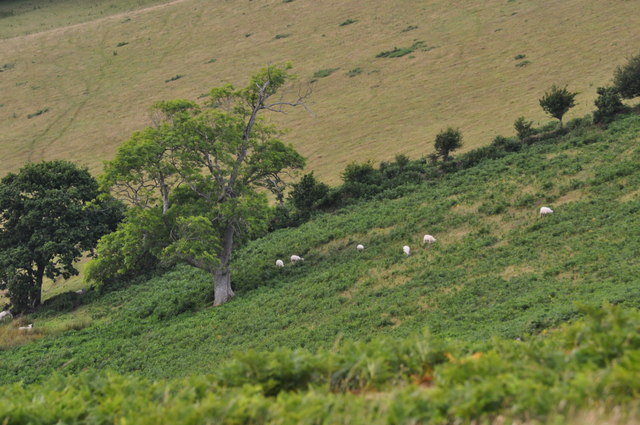Agriculture is responsible for an estimated 14 percent of the world's greenhouse gases. A significant portion of these emissions come from methane, which, in terms of its contribution to global warming, is 23 times more powerful than carbon dioxide.
HowStuffWorks "Do cows pollute as much as cars?"
Factory farms are major contributors to greenhouse gasses, climate change - Denver green energy | Examiner.com
A new report out suggests some approaches:
High grain diets cause ruminants to produce less methane per unit of intake, however the carbon footprint of producing grain needs to be taken into account in assessing any overall benefit to greenhouse gas emissions. Consideration also needs to be given to the important role of grasslands in carbon sequestration, which can offset part of the damaging effect of methane emissions.
Methane from ruminant livestock | BSAS
www.arthurrankcentre.org.uk/images/1900_Ruminants_and_methane.pdf
Devon boasts acres of 'grasslands':

East Devon : Sheep on Peak Hill (C) Lewis Clarke :: Geograph Britain and Ireland
An alternative is to 'capture' the methane, as highlighted by the website Blue and Green Tomorrow:
Anaerobic digestion deserves its time in the spotlight
 We may be familiar with renewable energy sources such as solar or wind power, and others such as tidal and wave-based technologies have increasingly high profiles. But one clean energy technology that is not quite so well-known is biogas, produced by anaerobic digestion.
We may be familiar with renewable energy sources such as solar or wind power, and others such as tidal and wave-based technologies have increasingly high profiles. But one clean energy technology that is not quite so well-known is biogas, produced by anaerobic digestion.
Anaerobic digestion, or AD, is a collection of natural processes, in which microorganisms break down biodegradable material producing, among other things, biogas, which is largely made up of methane and carbon dioxide. This biogas can be cleanly burned to provide a renewable source of heat or power.
Anaerobic digestion is an attractive technology and one that we should be adopting around the country”, Richard Gueterbock, marketing director at AD plant manufacturers Clearfleu, tells Blue & Green Tomorrow.
Like all renewables, harnessing biogas can provide clean, sustainable source of energy that won’t harm the environment and contribute to climate change. Unlike all renewables, it does this while cleanly getting rid of waste that might otherwise be burnt or thrown onto landfills.
As Prince Charles – apparently somewhat of an anaerobic digestion fan – said while opening the UK’s first commercial biomethane to grid plant at Poundbury in 2012, it is “a completely virtuous circle.”
Anaerobic digestion deserves its time in the spotlight - Blue and Green TomorrowRuSource; www.arthurrankcentre.org.uk/images/1897_Anaerobic_digestion.pdf
See also: Futures Forum: SVEAG: an anaerobic digestion project
Futures Forum: Bicton EaRTH Centre
.
.
.

No comments:
Post a Comment